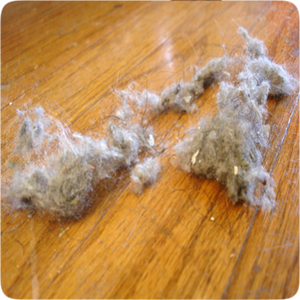
More Articles
What is that you are breathing?
If you are concerned about those dust motes in the air that are easily seen floating in sun rays. Or if you get some kind of gritty or fibrous material accumulated on your table or desk every day. Or maybe you have a little coughing fit once in a while. Or an irritated throat. Or itchy skin. Or burning eyes. Or...

Is there something in this dust that you should be worried about? Or if you are having constant or periodic symptoms when in a particular area, could it be something in the dust that is having a detrimental effect on you?
Keep in mind that whatever is in the air eventually falls out of the air. So testing the settled dust for composition can be quite useful.
What can be done to find out if this dust is presenting problems for you?
Building dust has a fairly consistent composition. Variations from this consistency can signal the presence in sufficient quantity to elicit physical reactions. Often up to 50% of dust content is dander. Dander - skin flakes, it can be from humans or animals that stay in the area or occasionally visit. Fibers from cotton or synthetic clothing and paper are often at high percentages in the dust content. So dander, cotton and/or synthetic fibers and paper dust are often among the most plentiful materials.
Many people are allergic to cat or dog dander. It is quite unlikely that people can become allergic to human dander, but allergies to creams, lotions, perfumes, aftershaves and such items that are put on the skin could have allergic effects.
Fungal (mold) spores and hyphae (underlying mold structure), pollens, insect parts, mice and rat dander, urine, feces or hair and dust mite feces and body parts can certainly be allergenic for some people and are often found in settled dust.

Irritants can also result in a variety of physical reactions. Fiberglass, which can come from inside walls, attics or from HVAC systems can be a factor. Fiberglass is known to be irritating to skin, eyes and respiratory system.
A very common irritant is construction dust. It has a similar effect as fiberglass. Where does it come from? Remodeling an area with no or insufficient containment can spread construction dust far and wide. Running an HVAC system while doing such things as cutting drywall or especially sanding the spackling or other such material while running the A/C system can spread the offending material throughout the area served and contaminate the system to the degree that it can have detrimental effects long after the renovation has been forgotten. Often the return vent is covered to keep construction dust from contaminating the HVAC system. That is a good partial solution, but if conditioned air is coming into the remodeling area, it has to go somewhere, so unless the area is placed under negative air pressure and that air safely exhausted, it is likely to travel somewhere that it can cause trouble.
What's to be done?
- If there is a reason to be concerned about what might be in the dust that could be detrimental, the first action would be to have the dust analyzed for composition. You need to know the content to get a clue as to what might be the source or sources of allergens, irritants or even toxins.
- The components of the dust will just be clues that must be followed up to find the sources of the ones most likely to be problematic. If fiberglass is a suspect, what is the source? Are there air pathways between the attic and the occupied spaces such as recessed lighting or any other penetrations in the ceiling? Is the fiberglass insulation in the HVAC system deteriorating?
- If construction dust is a likely suspect, it might require an environmental deep cleaning of the area, which includes thorough HEPA (High-Efficiency Particulate Arresting) filtered vacuuming of all surfaces including floors, walls, and contents. This is followed by a wipe down of hard dust-collecting surfaces with damp cloths. A thorough cleaning of the HVAC system to National Air Duct Cleaners Association (NADCA) standards will be necessary if it has become contaminated, and/or if fiberglass has become deteriorated. NADCA standards include cleaning and sanitizing the coils, thorough vacuuming or all surfaces including all duct interiors plus cleaning of fiberglass insulation plus repairing or replacing any torn or deteriorated fiberglass. Any microbially contaminated fiberglass must be removed and replaced with non-fiberglass insulation such as Reflectix.
- If significant components involve pests, extermination activities might be necessary prior to environmental deep cleaning.






